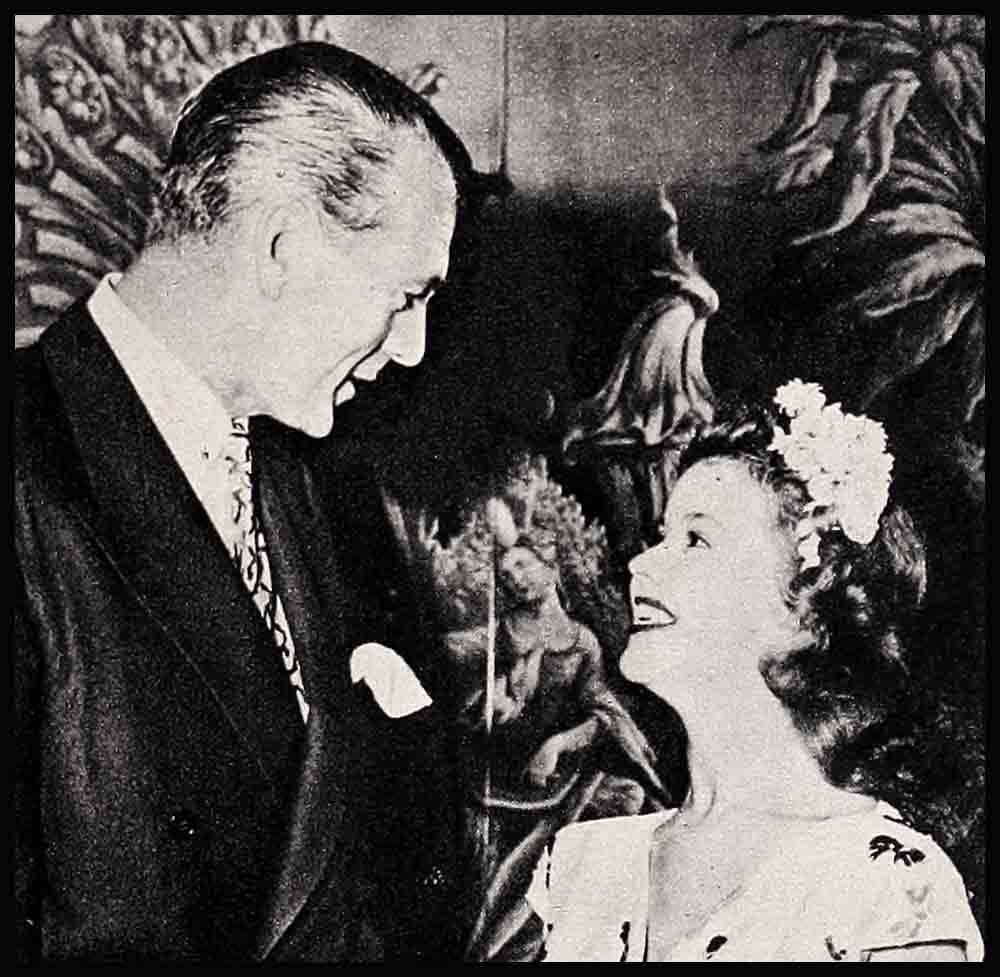
These Exciting People
I find Hollywood one of the most interesting places in which I have ever lived . . . and I have lived all over the world. First in New York, where as Elsie de Wolfe, I carried on my career as an actress, and subsequently as an interior decorator. Then in various parts of Europe with my husband, Sir Charles Mendl, who was in the diplomatic service.
We resided chiefly at the Villa Trianon in beautiful Versailles until the Germans swept over France and our Embassy gave us orders to leave at once. And then we came to Hollywood, a pair of lonely, disillusioned people, feeling we had little to offer but anxious to make friends in this new strange world where we had found sanctuary.
In Hollywood everything is youthful, brimming with activity, the very air filled with the excitement that attends the birth of new ideas, new plans.
Life, as I was privileged to know it in the aristocratic circles in foreign countries, might have seemed glamorous. But I find far more stimulating the refreshing, unconventional viewpoint of Hollywood where young people are bent on achieving success quickly and through their om accomplishments. As my husband has often observed: “Hollywood is amusing. Not a stuffed shirt in the place!”
What Hollywood possesses uniquely is a great variety and brilliancy in its personnel. This is constantly manifested at its social functions. If we had a party in Cannes or Versailles or London, we were always overjoyed to have just one celebrity whose name was news throughout the world. But here in this endlessly amazing town you may gather together in a single evening twenty, thirty, forty, even fifty personalities who make headlines in the international press.
I remember the night at Mary Pickford’s when Buddy Rogers led an impromptu musical entertainment playing the trombone, and Jules Stein, of the Music Corporation of America, picked up a child’s violin and started to draw the bow across the strings. The tiny instrument belonged to Mary’s young son. Mr. Stein hadn’t touched a violin for years and everyone was surprised at his skill.
Alex Steinert, who composes for pictures, wandered over to the piano, because by that time music was in the air, and next Fefe Ferry, one of the colony’s bon vivants, found another violin. Within a few moments a first-rate quartette was organized and they entertained the guests until dawn. Every one danced and sang and had a wonderful time. No one wanted to go home.
It was a grand party that had magically grown out of an impulse and developed into a rare and unforgettable evening. How could anyone forget Errol Flynn, Kay Francis, Sonja Henie, Reginald Gardiner and numerous other film-famous folk joining together in popular songs?
At another party Frank Sinatra, Lauritz Melchior of the Metropolitan Opera, Jose Iturbi and one or two others prominent in the music and film worlds joined in an informal concert, which went on for long, joyous hours. Never in social history could you imagine anything like that.
Even more amazing as a revelation of the gay social spirit which prevails in Hollywood was the evening at my dear friend Elsa Maxwell’s when she gave a perfectly magnificent party to celebrate the liberation of France. It came to a climax in the early morning hours with Artur Rubinstein, famed pianist, Danny Kaye, Greer Garson and Cesar Romero holding a jam session. Danny had a bass fiddle, Romero a violin and Greer rattled a pair of gourds.
Romero was in his Navy uniform, having just returned from battle duty in the South Pacific, and Greer wore the first party dress—an Adrian creation in gold lame—that had been designed for her personal use in two years. She has done little socializing, like everyone else in Hollywood, due to the war and its demands, and her own career program. Besides, her husband, a Navy officer, is on active duty.
On this singular night, however, because it was a party with a purpose, Greer was as gay as a young girl at her debut and she danced throughout the evening with Cesar and Danny and Joseph Cotten and other friends and fellow artists. She and Danny Kaye made a striking looking couple as they rumbaed and sambaed together. They both have burnished, coppery hair which added to the pictorial effect.
Finally, everybody gathered around the piano while Rubinstein went “all out” in demonstrating how he could vary between light music and serious—everything, in fact, short of boogie-woogie. He also played waltzes for the dancers and it was somewhat like the Vienna of olden days, as I knew it, when he gave this music its natural rhythmic swing. I noticed that even Rita Hayworth, who—as the French say—was enceinte at that time, was lured to the dance floor by the irresistible melodies. Imagine the illustrious Rubinstein playing waltzes for gay ballroom dancers!
Elsa presented a formal program that was extraordinary. Besides Rubinstein, she had Lauritz Melchior, Judy Garland, Frank Sinatra, Edgar Bergen and Charlie McCarthy, Danny Kaye, Alicia Markova and Anton Dolin, the celebrated ballet dancers, as her stars. Each doing his or her own special top numbers.
It would have cost thousands of dollars to assemble such a group as this for a commercial concert, and it could never be achieved anyway because the artists would not, or could not, appear on the same program together. They all hold tremendous loyalty to Elsa, however, because she helped many of them in their early struggling days, particularly in Europe, securing them important social engagements, which helped them sometimes in a monetary way and in prestige.
At the close of the program Charles Boyer feelingly recited the “Marseillaise” and the audience then sang the words. This was a most dramatic moment, especially for all of us who have lived in France and who will always be faithful to her beauty and her best ideals. One of the voices that rang out above the others was that of Katina Paxinou, who started her career in Greece as an operatic songstress and who has a beautiful singing as well as speaking voice.
Our new friendships here began as a result of those that had already become established in Europe. Mary Pickford, for instance, Marlene Dietrich, the Darryl Zanucks, the Sam Goldwyns, the Jack Warners, Clifton Webb, Barbara Hutton, Gary Cooper, Maria Montez and many others.
If I were to choose the outstanding male personality of the screen, I think Gary Cooper would best qualify, because he is more typically American, to my way of thinking, than any other. He is rugged and a real man. When you think of the typical American, for some curious reason, your mind goes to the West, and Gary seems to represent just that.
Furthermore, he has humor of a dry character. He is a big, rangy kind of man, and even shy in his attitude, which makes him very interesting and attractive. My husband and I both like him immensely for himself and as a screen personality. We have found him to be a natural counterpart of the clean-cut types he portrays in the films.
Joan Fontaine has a child heart with a matured, brilliant mind. When she darts across the room impulsively right in the midst of a formal social gathering, she is not trying to arouse attention or be different, but merely obeying the whim that possesses her at the moment. For this reason she is not always understood. We have found her warm and kindly and thoughtful, and great fun as well. She is a lovely actress and on the screen, as in real life, reflects radiant beauty.
I know and very much enjoy Maria Montez. Naturally, she is known as Mar-ee-a, but I call her Mar-I-a, and it seems to divert her. She is a clever girl, sophisticated, ambitious and talented. I like her for her decisive approach to everything pertaining to her career and for her congeniality.
She enters thoroughly into an occasion, as for instance, the night at Elsa Maxwell’s party when she did-a Russian dance with the impresario. Sol Hurok, who sponsors the Ballet Theatre and various other groups. It was a colorful note to highlight the evening. Maria, I am sure, will go far, due to her energy and enthusiasm, and her bright, spontaneous nature.
To me Bette Davis is a phenomenon when it comes to people who concentrate in attaining perfection in their work. She appears to grow in artistic stature from picture to picture. She proved herself a superb actress in “Mr. Skeffington.”
When I met her she impressed me as a very sincere young woman who is determined to fight to maintain her position as the top actress in Hollywood. I like that sort of devotion to a career. Bette has the simplicity of manner and dress of the person who shuns glamour for genuine achievement.
I also admire Ingrid Bergman who is such a strong Nordic type and has such great capabilities as an artist.
Greta Garbo, also emphatically Nordic, I have known for a number of years. and she, too, has admirable gifts which I am sure will always entitle her to respect for what she has signified through the years in pictures. She is very serious and moody, perhaps even a bit too introspective, but emotionally has rare depth.
Judy Garland has visited our house several times and we enjoy her for her gracious qualities. She is very quiet and unassuming, which contrasts so favorably with her surpassing talent. once when at a party she sang “The Last Time I Saw Paris,” she had most of us weeping. While she had never been in Paris, it was amazing how she evoked a nostalgic mood.
The individuality of the women in Hollywood always fascinates me. They are smart and up-to-date, well-groomed and socially conscious in a modern, sophisticated manner. They do not adhere to tradition in dress; they are making new traditions.
The informality of Katharine Hepburn, for example, even has its justification. After all, she was educated in a fashion to know what represents the best in taste. If, therefore, she chooses to break the rules she knows that is her privilege. She has found that her freedom in attire—slacks, sweaters, overcoats—allows her the latitude for living and accomplishment which she desires.
It is her mental gifts which assume preeminence. She is one of the most vigorous and unusual young women you will ever encounter. Gifted, clever and original in her work, she is a thinker, a doer, who never wavers or delays, but fills the day with activity.
I think Norma Shearer has made much of life. She has had remarkable success. Her first marriage to Irving Thalberg was one of intelligence and happiness—a rare combination. Norma had a rich life domestically with her husband and two children, and she had her husband’s expert guidance in her career.
She has found new happiness in her second marriage to Marty Arrouge, following her widowhood. Under the stress of wartime she is giving herself completely to this new union. Mr. Arrouge is in the Naval Air Service and Norma has put her career into the background. I think she is wise under present circumstances because the hazards to personal happiness brought about by the war are very great indeed. Norma Shearer is therefore leading a well-balanced life, showing exceptional adaptability.
Recently I enjoyed renewing my acquaintanceship with Loretta Young, who is again resuming her career after an interval for motherhood. She has charm and a Progressive mind. She was dressed in exquisite taste on the recent occasion of a big dinner party. Her gown was an off-white heavy moire, with a tightly-fitted long-sleeved basque type of jacket.
Her jewelry was antique, her coiffure was dressed high at the sides from a middle part in her hair, and low at the back of the neck. The impression she gave was veritably that of a gentle picture right out of the moyen age.
A most delightful young girl is Shirley Temple. I always loved her as an adorable and precocious child star, and her transition into lovely young ladyhood seems to have been accomplished with grace. She is so pretty—her eyes and her pinkish cheeks shine with the glow of health—and her conversation is lively and effervescent, with just the proper restraint.
I think I shall always remember her wearing a bouffant dress of white net over white taffeta, adorned with silver butterflies on the shoulders of the square-cut bodice and on the full skirt. The tiny ornaments shimmered against her golden brown hair as if they had just lighted there. All in all, Shirley was not unlike the dream come true of the wishful thinking of all girls of sweet sixteen.
Among the newer young men of the screen, I have found Turhan Bey an arresting type. Naturally, because of his Turkish birth, environment and education, he has acquired a Continental air and manner which are very intriguing.
He escorted Lana Turner to a party where we met for the first time. Lana’s very fair coloring offered an interesting accent to the swarthy tonality, let us say, of Turhan. I think he’s bound to be a big success on the screen, not alone because of his personality, but because the war is bringing about many changes in the world map. Turkey, India and China are no longer far away and as time goes on I feel pictures will use more and more backgrounds of all countries of the world.
Turhan Bey is a flexible type. He could fit well into almost any romantic story with a foreign locale. He seems to have come along, too, at about the right time—even as did Rudolph Valentino during the last war. He has a similar exotic appeal.
But, after all, who am I, a newcomer to this wonderful world of “make believe,” to appraise qualifications? I can only be an onlooker grateful to have found such peace in a “cockeyed world.”
So much beauty—so much glamour—it is difficult to remember them all as they pass in review down the corridors of my memory.
THE END
It is a quote. PHOTOPLAY MAGAZINE FEBRUARY 1945

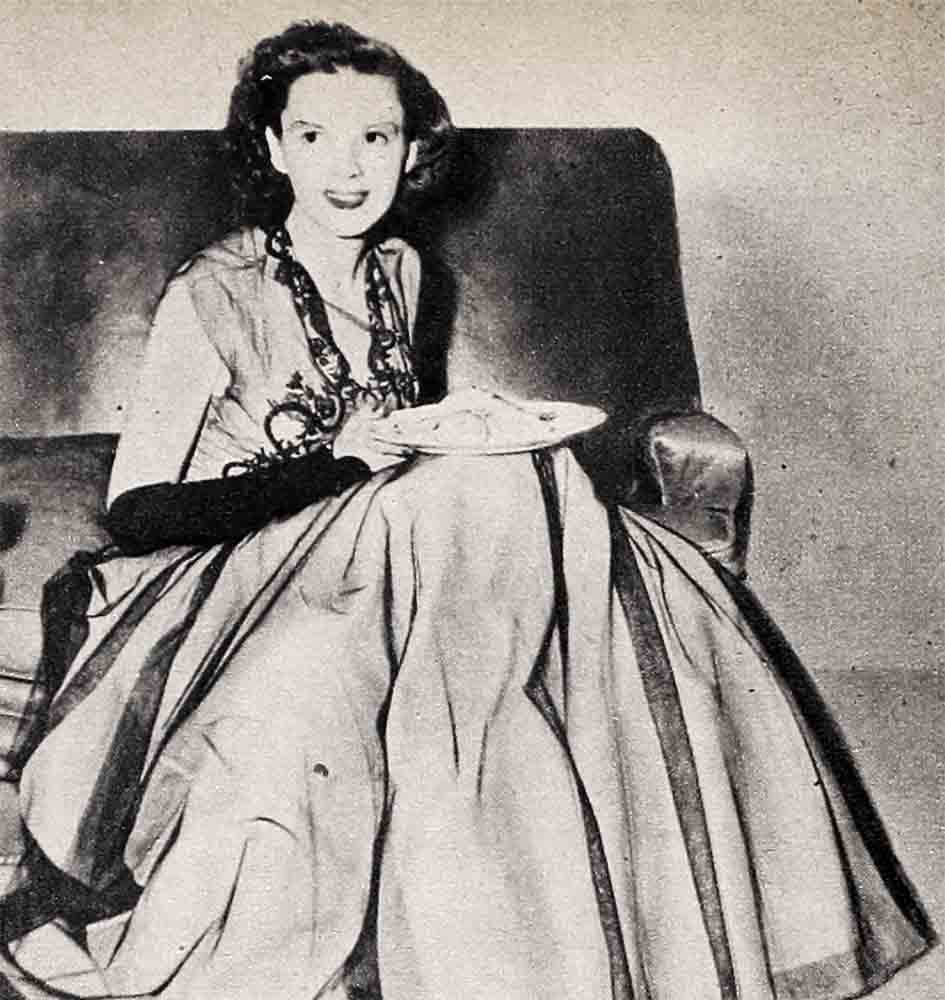
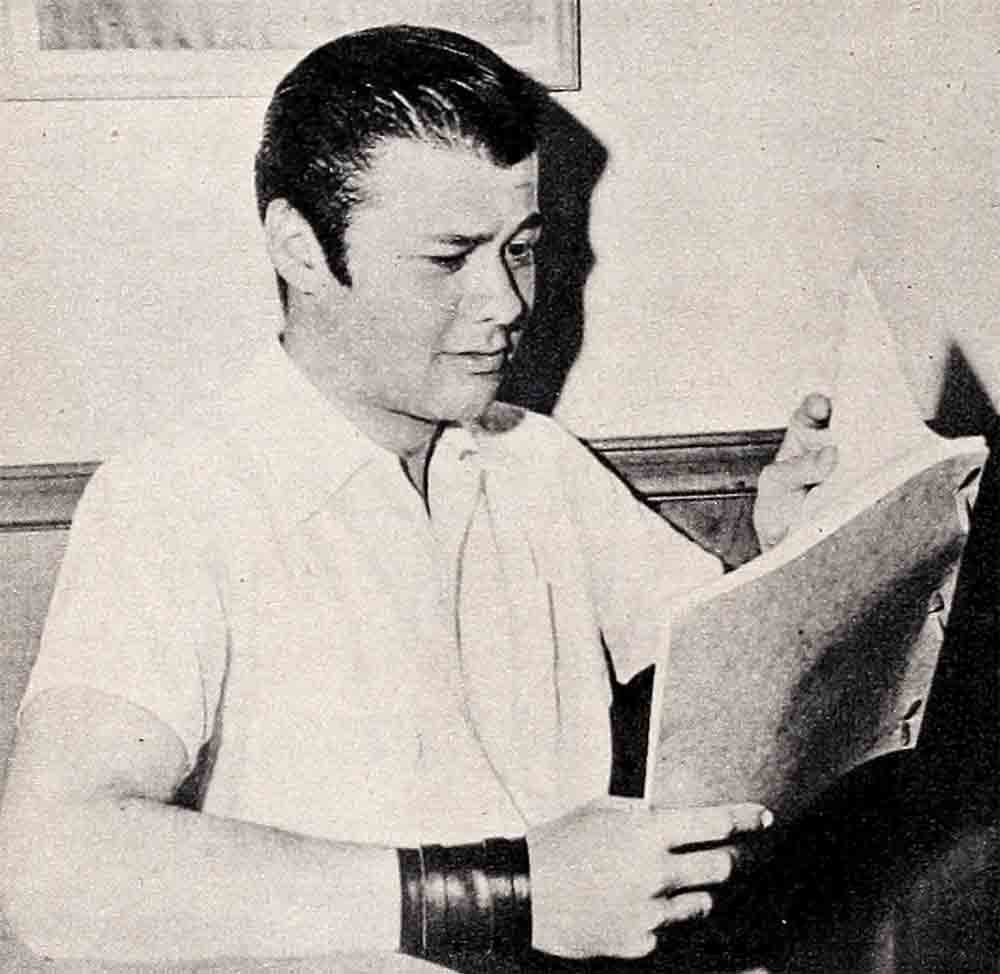
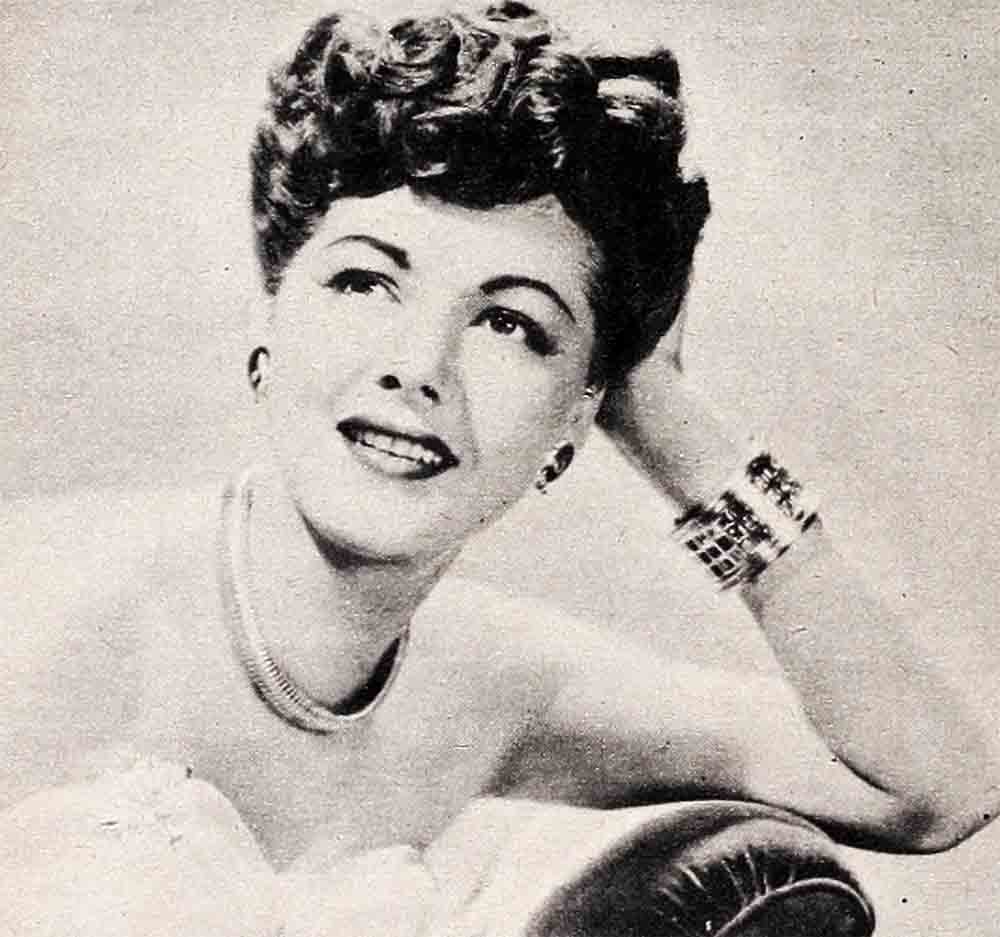
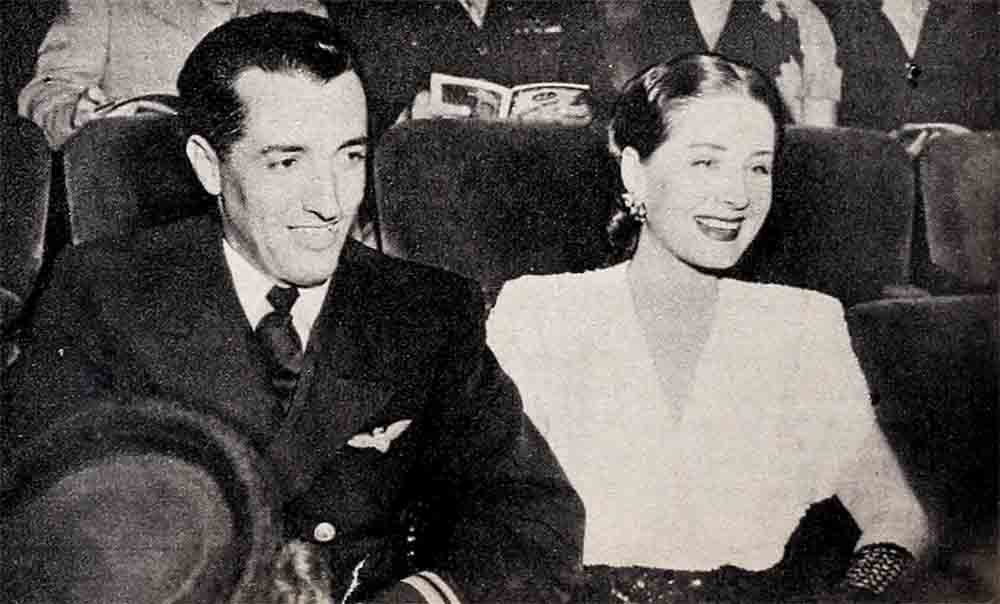

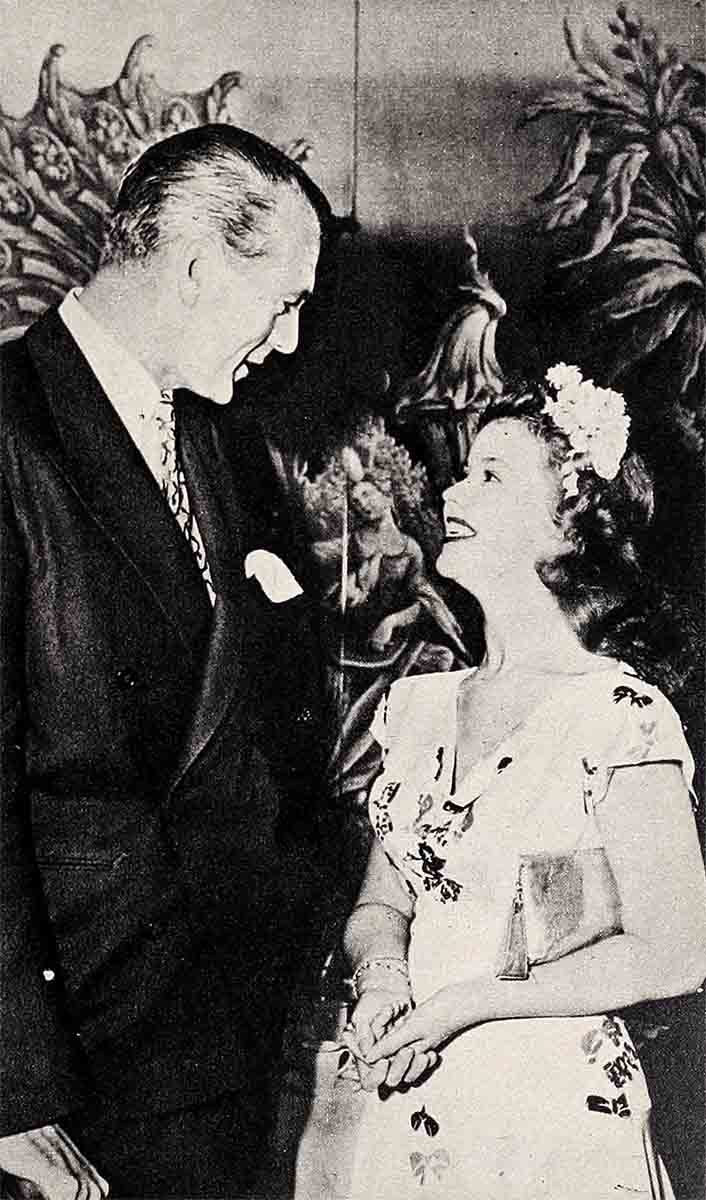
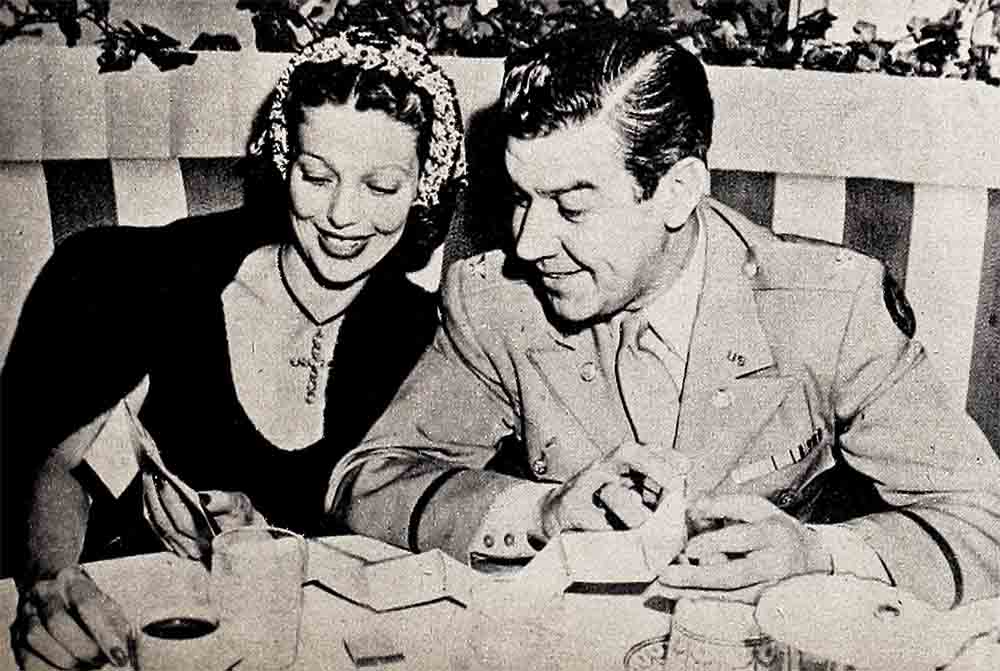

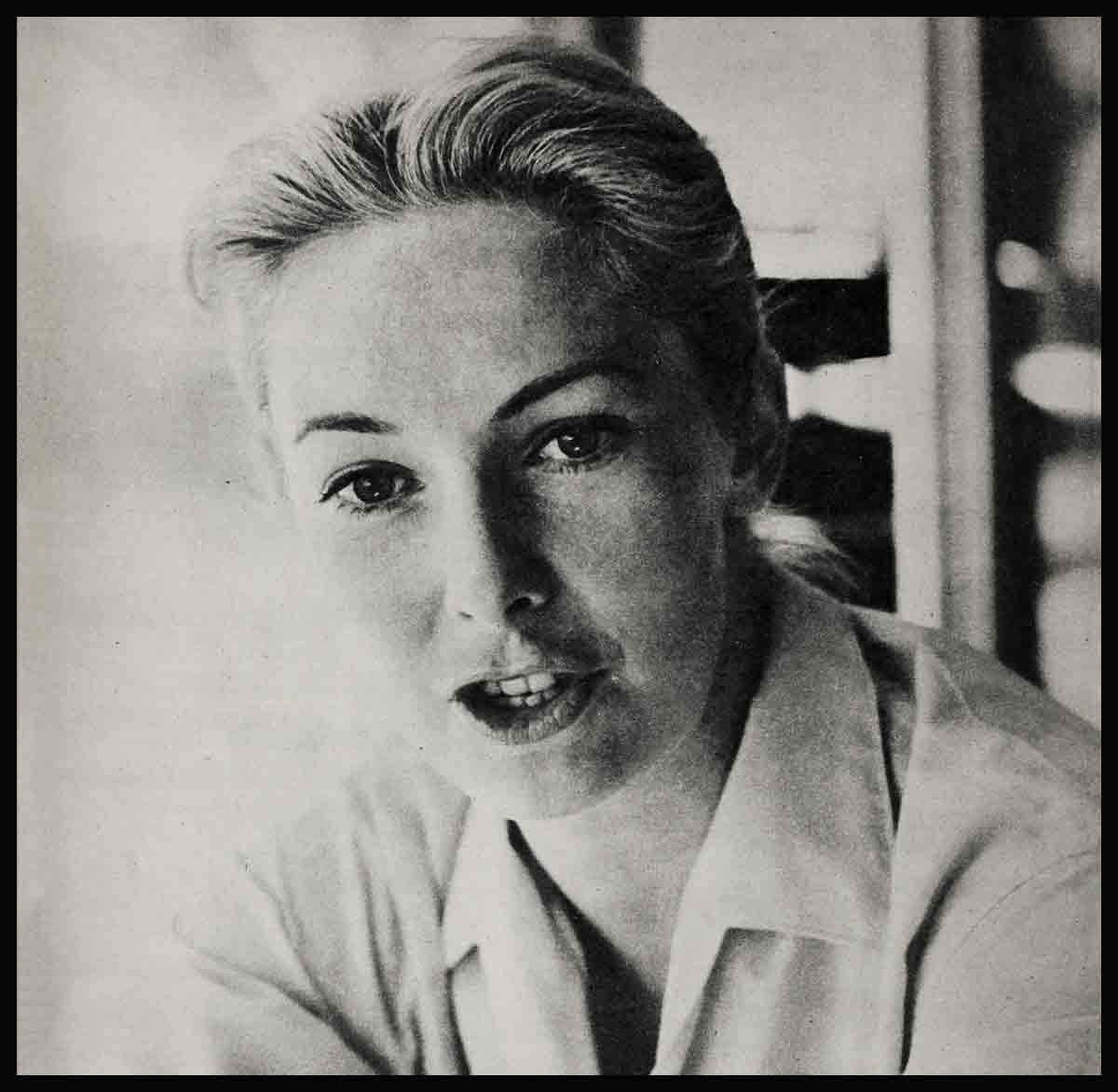

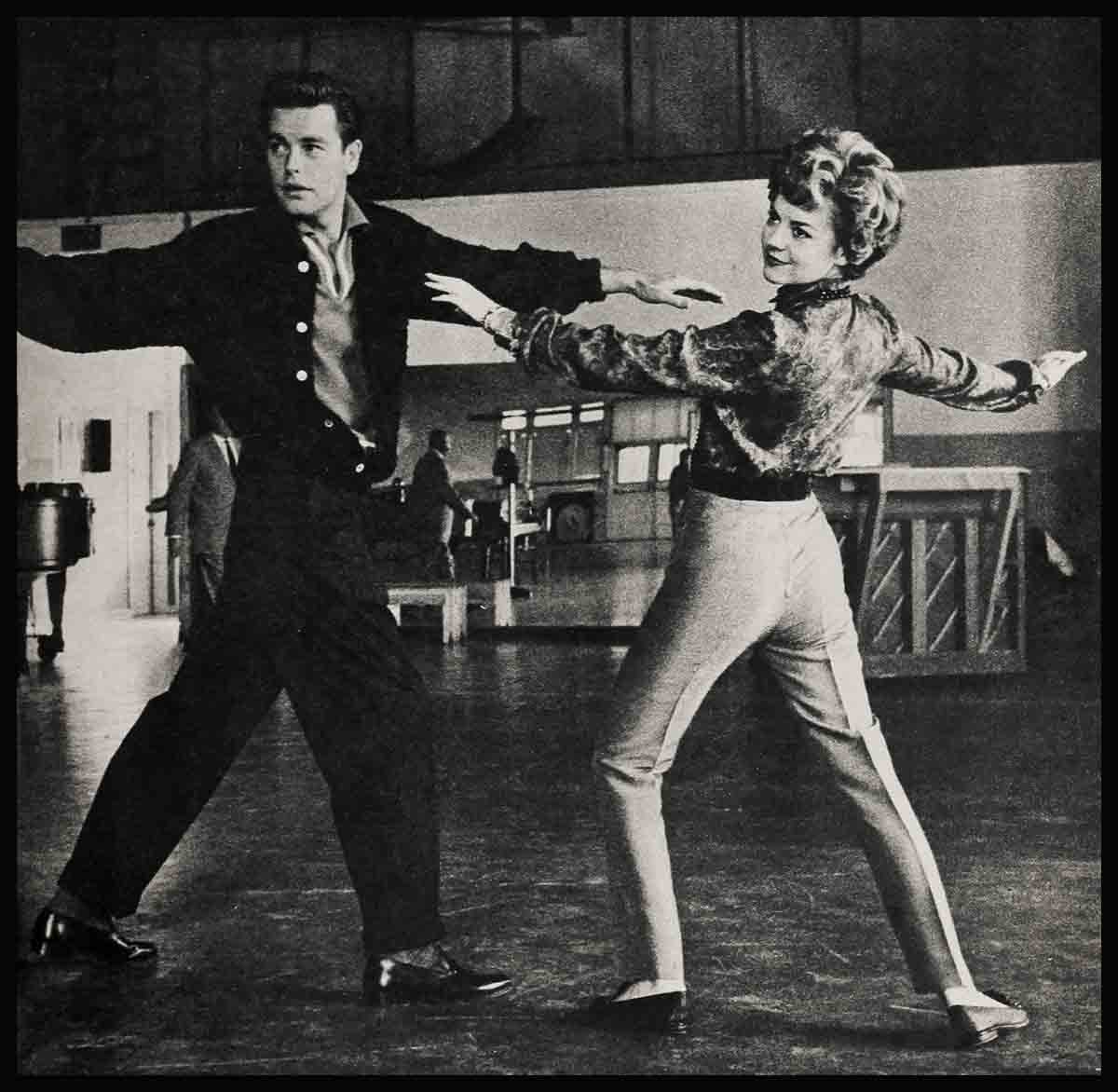
Sylvia Osborne
8 Ağustos 2023Thanks for sharing yokur thoughts on สมัครบาคาร่า.Regards
Rupert Webb
8 Ağustos 2023I am constantly looking online for articles that can assist me. Thank you!